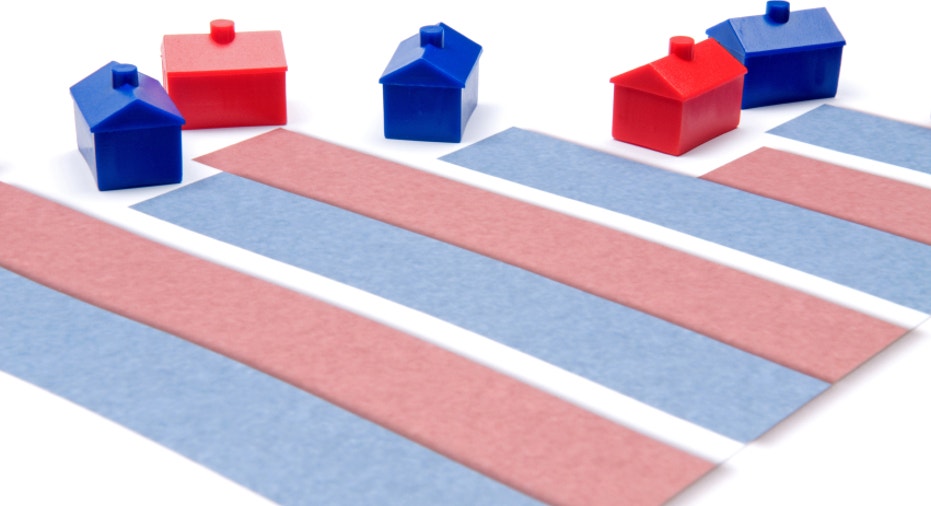Lender-Paid Mortgage Insurance: Pros and Cons

Are you looking to buy a home and hesitating since you still haven't accumulated an adequate down payment to avoid paying private mortgage insurance? You should explore the possibility of going the lender-paid mortgage insurance, or LPMI, route if that's the only barrier preventing you from taking advantage of today's low interest rates.
Mortgage insurance
A policy that reimburses the lender if the borrower defaults on a home loan. Generally, lenders require mortgage insurance when the loan is for more than 80 percent of the home's value. Often known as private mortgage insurance, or PMI. The Federal Housing Administration sells mortgage insurance, too.
Compare mortgage rates at Bankrate.com
Avoid private mortgage insurance
With LPMI, your mortgage lender pays your mortgage insurance premium upfront in a lump sum and passes on the cost to you in the form of a higher interest rate. With LPMI, the interest rate often is one-quarter to half a percentage point higher, but it sometimes can be outside of that range, either lower or higher.
According to Bill Banfield, vice president of capital markets with Quicken Loans, "It is similar to leasing a car in that you can make a monthly payment every single month, or you could do a one-time payment and you get a discount for doing that."
An example of PMI and LPMI
Say you are looking to buy a $200,000 house and don't have the 20 percent down payment required to avoid mortgage insurance. If you were to put down $20,000 to make a 10 percent down payment, you would typically have to make a private mortgage insurance payment every month.
Banfield says that at Quicken Loans, if you have a 720 credit score, you would pay $66 a month on private mortgage insurance in this case. At a 4.5 percent interest rate on a 30-year fixed mortgage, your monthly mortgage payment would be $912, making for a total monthly payment of $978, including the PMI cost.
On the other hand, if you took the LPMI option, your monthly mortgage payment, at a slightly higher interest rate of 4.625 percent, would be $925, and you wouldn't pay any additional amount in private mortgage insurance.
What affects the costs?
Private mortgage insurance, both regular and lender-paid, gets more expensive with higher loan-to-value ratios or lower credit scores.
Loan-to-value ratio
Outstanding mortgage debt as a percentage of the home's current market value.
Formula: Mortgage amount owed / Appraised value
Example: Alex owes $60,000 on the mortgage. The house is worth $100,000.
$60,000 mortgage / $100,000 = 60 percent
Credit score
A number, roughly between 500 and 850, that summarizes a consumer's creditworthiness.
The higher the score, the more able and willing a consumer is to repay a loan, lenders believe. The best mortgage rates and terms go to borrowers with credit scores of 740 and higher. Generally, a "low" credit score is in the "fair" to "poor" ranges below.
750 and higher = excellent 749 to 700 = good 699 to 650 = fair 649 to 600 = poor 599 or lower = bad
Tax advantage of LPMI
Opting for LPMI offers at least one advantage over going with private mortgage insurance: While your private mortgage insurance payment is not tax deductible, your mortgage interest payments are.
Thus, the higher interest rate you pay by doing the LPMI is tax deductible. Private mortgage insurance has been tax deductible in previous years, and the private mortgage insurance industry is lobbying to get the deduction extended, but it is not currently tax deductible.
Private vs. FHA
Peter Milewski, director of homeownership lending with MassHousing in Boston, says that the state agency's LPMI option, launched in April, makes up as much as two-thirds of its production. He says, "It is popular because it is a vehicle whereby the cost of mortgage insurance built into the interest rate is less expensive than paying for the mortgage insurance separately."
Milewski also finds borrowers leaning toward LPMI who would otherwise consider Federal Housing Administration-insured loans as an alternative. FHA insurance has become more expensive in the past couple of years.
On the negative side, you are tied to the higher interest rate you get with LPMI as long as you hold on to the loan. However, with borrower-paid PMI, the mortgage insurance payments are dropped automatically after the loan balance falls below 78 percent of the original value of the home.
Comparing the options
As to which option is better for you, it all depends on your situation and what your plans are for your home purchase. Ask your banker to crunch the numbers to see what works best for you.
Tim Pascarella, a senior loan officer with Ross Mortgage in Royal Oak, Michigan, notes, "The one thing I tell my customers when it comes to lender-paid mortgage insurance is that there are a lot of things that factor into it. It is not for everyone. If this is the house you are going to live in for the next 30 years, you might just want to take the lowest rate possible and just deal with the private mortgage insurance."
Reducing the cost of LPMI
There are ways to reduce the cost of lender-paid mortgage insurance. For instance, you could buy down your interest rate with discount points. This way, you could pay the same mortgage interest rate as you would without adding on the additional LPMI-induced hike. You could even look into whether the seller of the house is willing to buy down your interest rate to sweeten the deal.
Another option: Your mortgage lender pays only part of the mortgage insurance upfront rather than the whole amount. In this case, you would still make a monthly payment on private mortgage insurance, but one that would be considerably lower than the full payment you would otherwise be liable for.
Copyright 2014, Bankrate Inc.



















